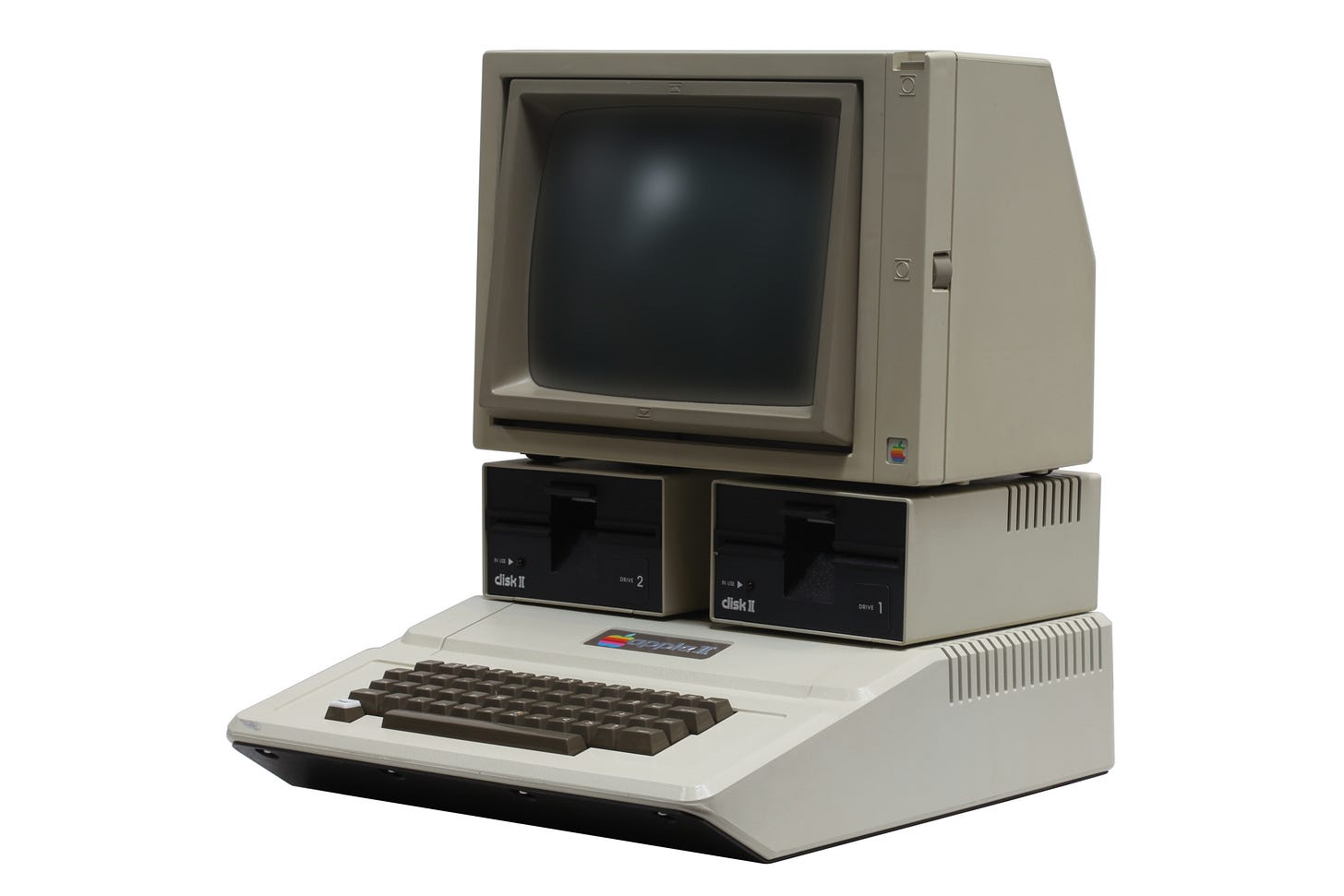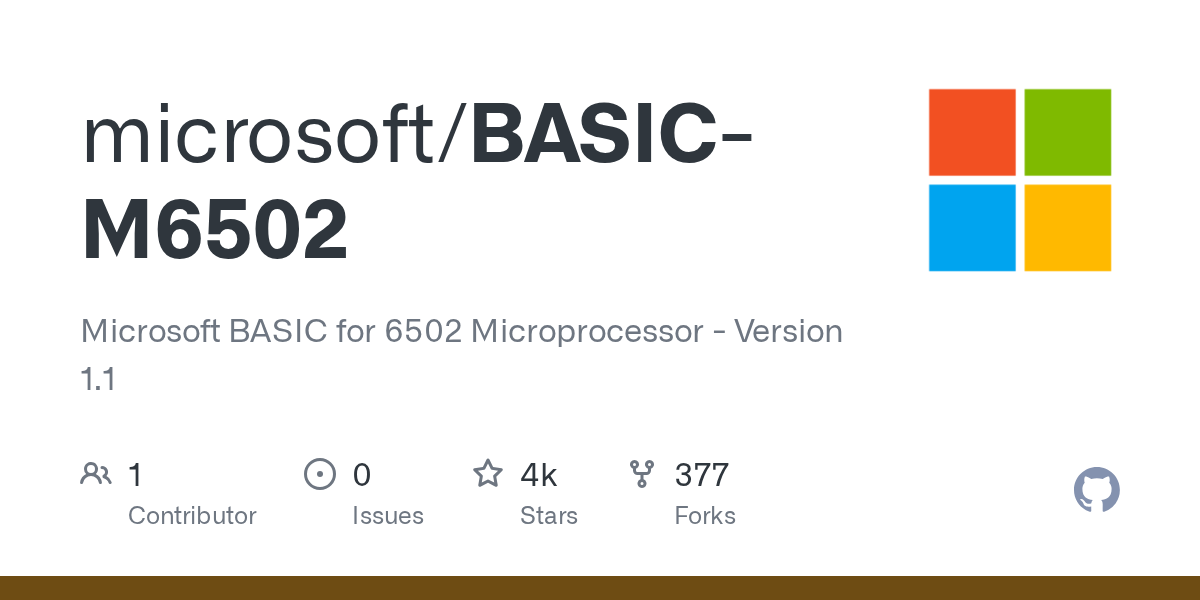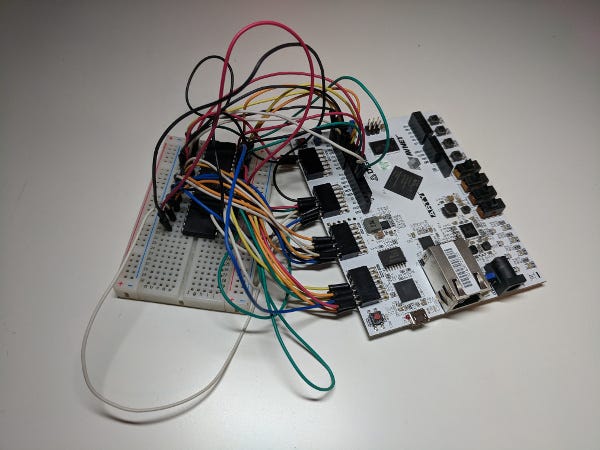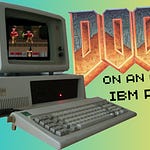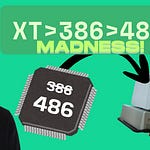In this article & video, I’m going to wander through its origin story, what makes the code special, and even have a hands-on peek at the source code on GitHub.
What is Microsoft 6502 BASIC v1.1?
BASIC is a high level computer language that was all the rage when the microcomputer market kicked off in the late 70s and early 80s. The BASIC interpreter was often the first thing you would see when you switched on your computer, whether you had a Commodore 64, an Apple II or a ZX Spectrum. Almost all the early home computers had the BASIC interpreter.
Today, I'm specifically talking about version 1.1 of Microsoft's 6502 BASIC. It was so called 6502 BASIC because that was the chip inside many early super successful home computers. Microsoft 6502 BASIC was written completely in MOS 6502 assembly, originally developed in 1976-78. It’s part of Microsoft’s early BASIC family. In fact, BASIC was Microsoft's first product, starting with Altair BASIC for the Intel 8080 in 1975. It was ported to various CPUs. The version we are looking at today, has just been released on the internet for anyone to play with is version 1.1 which includes fixes to the garbage collector. This version was written by some guy called Bill Gates (you may have heard of him). It also had contributions by a Commodore engineer John Feagans in 1978. This github release, has been made under the MIT licence, which is special because not only are you free to view, modify, redistribute you are even free to build upon it. 
Historical & technical importance
Despite this not being Microsoft's first release of BASIC, the 6502 version helped anchor Microsoft’s reputation in the home computer era. The MOS 6502 CPU was cheap, simple and incredibly influential. The 6502 was the beating heart of the Apple II series of computers, launched in 1977, the first Commodore computers, the PET, as well as the later VIC-20 and C64, the Atari 400 and 800, The BBC Micro in the UK, as well as the Acorn Electron and Atom as well as other less common systems, including the the chipmaker's own machine, the KIM-1. Because of this widespread adoption of the MOS 6502 CPU, BASIC for the 6502 spread far, and Microsoft's 6502 BASIC was arguably the most popular version of BASIC for the 6502.
From a technical viewpoint: implementing a full BASIC interpreter in constrained memory, constrained CPU cycles, limited RAM, etc., forced cleverengineering. Things like floating-point arithmetic, string handling, arrays, dynamic memory / garbage collection—all in 8 bit limits. 
The licensing, legal, and preservation side
Before this official release of Microsoft 6502 BASIC on github, there were “unofficial” copies, reverse engineered code, preserved archives. But this MIT-licensed version removes uncertainty around legality, makes it safe for hobbyists, educators, historians to use.  Microsoft says build environments have been reconstructed by preservationists; they’ve verified the source can still reproduce byte-exact ROMs. Microsoft and some other long-standing computer software companies have recently started this welcome trend of freely releasing their legacy code for posterity. Microsoft themselves most notably have released the source code for MS-DOS 1.25, 2.0, and 4.0 on GitHub as well as the MS-DOS based GW-BASIC languages as well as the some slightly more modern software such as the File Manager (winfile) from Windows 3.0 and most of the .NET Framework components.
Exploring the GitHub repo
The repository includes m6502.asm. This one file is /the/ entire code base for the 6502 BASIC. It's all written in assembly. These days, software is many many times larger than this stuff, and often sprawls over hundreds of files.
As far as we know, this is the original handwritten-style assembler comments, labels, and the main routines like floating-point math, for example. I think it's fascinating looking over the commit information. Back in those days, there was no repositories like git. The code would be saved to floppy disk or tape. The file timestamps are reconstructed (or preserved) as being around 48 years old. That’s part of the charm. 
Note that this is not the extended version shipped later with the Commodore 64, etc. Those added graphics, sound, hardware-specific features. This version is more of the “core” language. Some of the features people associate with “Commodore BASIC” (e.g. disk commands, etc.) are vendor-specific additions, not in this core Microsoft 6502 BASIC. 
Performance limitations due to hardware. Also, the code is in assembly language; modern people reading it need patience and some familiarity with 6502 assembly to fully grok what’s going on.
What can one do with this now
So, what's the point in this 50 year old code - what the heck can you do with it, why would you even want it at all.
Well, from a few perspectives, depending upon what floats your boat. Since you're watching Al's Geek Lab, and you're this far into the video, I dare say you're either a Hobbyist or maybe you're looking from a educational/history perspective, but I can think of a few reasons.
For hobbyists: I dare say you might want to actually try and assemble the code and run it using an emulators, like an Apple ][ emulator. Or you could build your own ROM image and stick it in a real machine that has a 6502 CPU. You can actually still buy the 6502, so theoretically you could build your own 6502 machine and run Microsoft 6502 BASIC on it. If you're into FPGA shenanigans, perhaps burn it to an FPGA and play with that. If you've got a broken down 6502 relic, I guess you could even do part of fixing it up.
All of this stuff is highly educational too, reading the source code will teaching how programming languages/interpreters used to work, showing parsing, memory management, floating point math in tiny environments. It will give you an appreciation of how computers (even modern day ones) work at their machine level. That sort of stuff is not taught enough these days. It could really be a great history lesson too.
If you're into in-depth retro projects, you could combine the source code with modern tools to extend it, port hardware-specific features, integrate with other vintage hardware, etc.
And of course, if you're just someone that's curious, this is a great way to explore the history, see code written by Bill Gates & Ric Weiland in their early days.
Conclusion
Microsoft opening 6502 BASIC Version 1.1 is actually a pretty decent gift to people like us that enjoy digging into the roots of computing. I hope the once super closed source, propriatery Castle Microsoft continues it's new track record of opening historically significant stuff up. I'd love to see Windows 3.1 or 3.11, MS-DOS 6.22, maybe even Windows 9x opened up some day soon.


